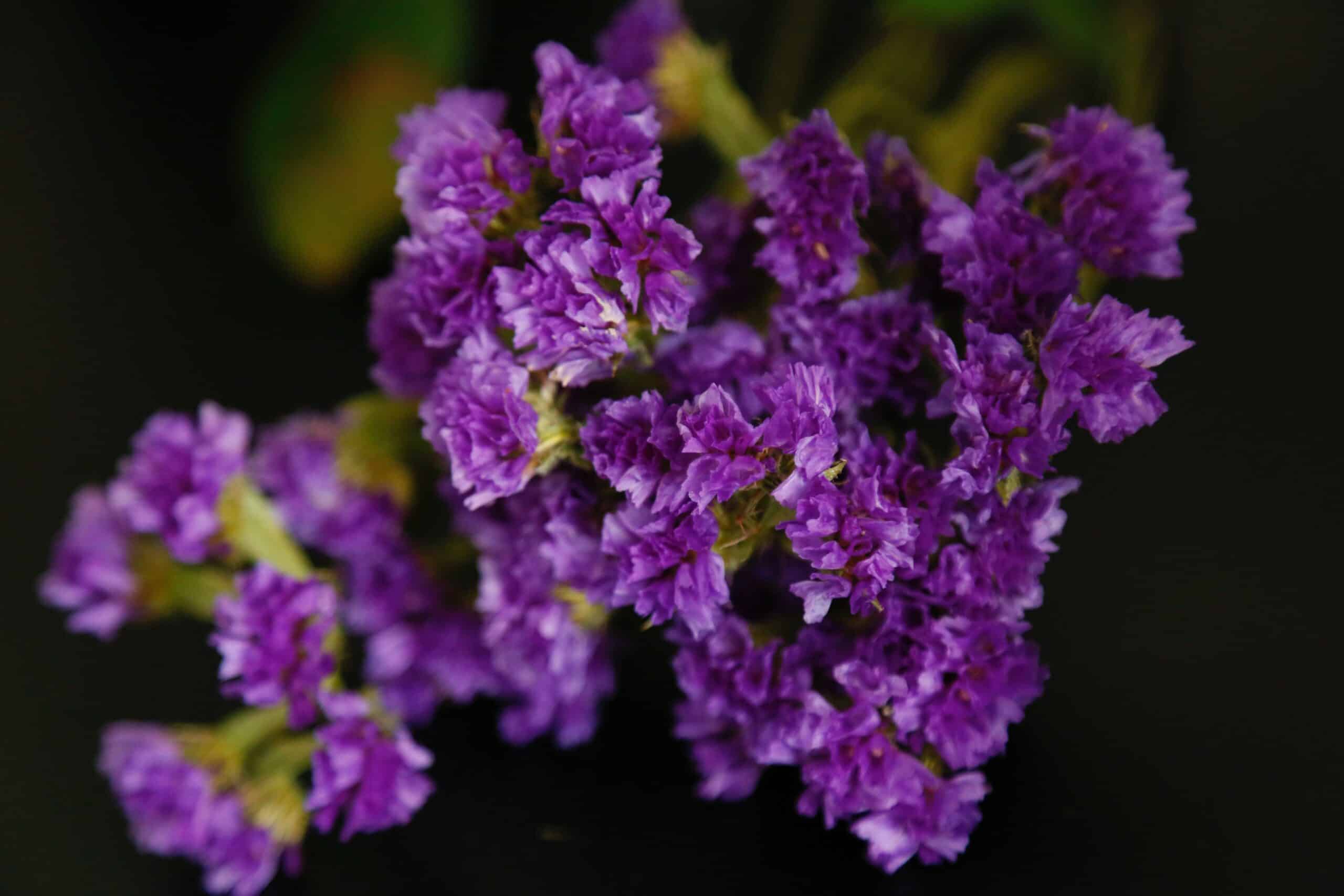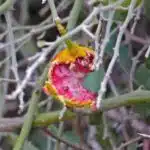The sweet smell of success emanates from the beautiful lilac bush. This fragrant flowering shrub is an easy-care and reliable garden staple that will reward you with a wonderful display of color in the springtime. There’s nothing quite like the sight of these vibrant blooms to instantly brighten up your outdoor space. If you’re looking for tips on how to grow and care for a lilac bush, you’ve come to the right place! In this article, we’ll provide all the information you need to cultivate a lush, healthy bush.
Lilac bushes can be found in gardens across the globe, delighting gardeners with their colorful petals and delicious scent. These hardy plants are ideal for those who want a low-maintenance addition to their outdoor space; they only require minimal upkeep once established. Furthermore, different varieties of lilacs can thrive in almost any climate, making them accessible to any gardener!
If you’re ready to add some life and color to your garden with a lilac bush, read on! This comprehensive guide will provide all the information you need about planting locations, soil types, watering habits and more. With just a few simple steps, you can have a flourishing lilac bush growing in your yard in no time!
What Is A Lilac Bush?
A lilac bush is a deciduous shrub that produces beautiful flowers in the spring. It can grow up to 10 feet tall and has a wide range of colors, from white to deep purple. The blooms of these bushes have a sweet scent that often attracts butterflies and other pollinators. They are easy to care for and make an excellent addition to any garden or landscape.
When choosing a location for your lilac bush, there are several things to consider. First, it should be in an area with plenty of sunlight; lilacs prefer full sun but will tolerate partial shade. Secondly, they need well-draining soil that is kept consistently moist but not wet. Finally, they should be planted in an area with good air circulation to prevent fungal diseases from developing on the leaves and flowers.
When planting your lilac bush, make sure it is set at the same level as when it was bought – too deep or too shallow can cause problems with its growth and flowering. It’s also important to mulch around the base of the plant to help retain moisture and keep weeds under control. With proper care and attention, your lilac bush can provide you with years of enjoyment and beauty! Moving on, let’s look at finding the right location for your lilac bush…
Choosing The Right Location For Your Lilac Bush
When it comes to planting a lilac bush, many people might think that any location would do. However, there is more to consider than simply finding an open space. The right location can make a huge difference in the health and growth of your lilac bush.
When selecting a spot for your lilac bush, keep in mind that it will require at least 6 hours of sunlight per day. It should also be protected from strong winds, which can damage its foliage. Additionally, you’ll want to make sure the soil drains well so that the roots don’t sit in waterlogged conditions and rot away.
Once you have found a suitable area for your bush, it’s time to prepare the soil for planting. Adding compost or manure can help improve drainage and increase fertility; it also adds necessary nutrients to the soil that will help your lilac bush thrive.
Preparing The Soil For Planting A Lilac Bush
Planting a lilac bush is like laying the foundation for a house – it’s essential to get the soil just right. By preparing the soil, you can ensure that your lilac bush will be healthy and happy all season long.
When it comes to soil preparation, there are several important steps to take. The first step is to remove any grass and weeds from the planting location. This can be done by using a garden trowel or shovel to dig them out, or by using a weed-killer spray if needed. Next, loosen up the soil by digging down at least 8-10 inches deep and mixing in organic matter like compost or aged manure. This will help improve drainage and provide nutrients for the plant’s roots. Lastly, mix in fertilizer according to package instructions – this will provide your lilac bush with an added boost of nutrients as it grows.
Once these steps are complete, you can move on to planting your lilac bush. To ensure success, it’s important to choose a variety that is suitable for your climate and growing conditions – plus, don’t forget about choosing a spot with plenty of sunlight! With some proper care and attention during planting time, you’ll give your lilac bush its best chance for survival.
Planting A Lilac Bush
As far back as history remembers, the beauty of lilac bushes has enchanted us. We may never know how many generations have been captivated by their sweet scent and vibrant colors. Now, it’s your turn to experience the joy of planting a lilac bush!
First, you’ll need to prepare the soil for planting. Make sure it’s well drained and free from weeds and other debris. Loosen up the soil with a garden rake and add compost or manure to give it some nutrients. After that, you’re ready to plant your lilac bush!
When selecting a spot for your lilac bush, find an area with plenty of direct sunlight and good air circulation. Dig a hole that is twice as wide as the root ball of your chosen shrub and just deep enough for the roots to fit comfortably in the soil. Place your shrub in the hole, fill it with soil, firm it down gently around the base of the plant and water thoroughly. To complete the process, mulch around your newly planted bush with organic material such as grass clippings or bark chips to help retain moisture in the soil. And voila – you’ve just planted a beautiful lilac bush!
With your new addition settled into its home, it’s time to think about its ongoing care requirements like watering and feeding – but don’t worry; we’ll cover those topics next!
Watering And Feeding Requirements For Lilac Bushes
Who knew that something as seemingly effortless as a lilac bush could be so demanding? From the delicate petals to the fragrant smell, it appears to be a low-maintenance plant. But don’t be fooled – these bushes require regular care and attention if you want them to thrive. Here’s what you need to know about watering and feeding requirements for lilac bushes.
It may come as a surprise, but lilacs need lots of water! In order to ensure they are getting enough moisture, it’s important to water at least twice (or even three times) a week during their peak growing season. Additionally, adding fertilizer or compost once per month during this time can help your plants grow stronger and healthier. Make sure never to over-fertilize your lilac though – too much of anything can have negative effects on the plant.
No matter how carefully you tend to your lilac bushes, there is no one-size-fits-all approach when it comes to keeping them healthy and happy. The best way to ensure they remain in good condition is by regularly monitoring their needs and adjusting your care routine accordingly. With the right amount of care, you’ll have beautiful blooms each spring! Now it’s time for the next step: pruning your lilac bush for optimal growth.
Pruning Your Lilac Bush
Prune away any dead wood and give the lilac bush a good shape-up to keep it looking its best. Pruning is an essential part of caring for a lilac bush and should be done yearly, preferably in late winter or early spring before growth begins. To get the most out of your lilac bush, you’ll want to give it a good trim once every year.
It’s best to prune when the bush is dormant, so that new growth isn’t damaged by being pruned back. Take off no more than one-third of total growth each time, removing dead wood and thinning out crowded branches. This will ensure the shrub has enough foliage and flowers come springtime. Don’t be afraid to cut back some of the oldest stems right at ground level; this will help encourage more vigorous growth from underneath.
When you’re done, stand back and take a look at your handiwork – it should have a pleasing shape with plenty of room for new shoots to grow in the coming season. Regular pruning will help keep your lilac bush healthy and full of blooms for years to come! With careful maintenance, you can look forward to enjoying beautiful blossoms for many springs ahead.
Common Pests And Diseases Of Lilac Bushes
Pruning is an important part of caring for a lilac bush, but it isn’t the only thing to consider. Common pests and diseases can also affect your plant’s health and growth. In this section, we’ll take a closer look at the most common pests and diseases of lilac bushes.
Aphids are one of the most common pests that attack lilac bushes. These tiny insects feed on the sap inside the leaves and stems, causing them to weaken and distort. Other signs of aphid infestation include yellowing or wilting foliage, as well as sticky residue on leaves or branches.
Fungal diseases like powdery mildew are also a concern when growing lilac bushes. This disease usually appears as white spots on leaves and stems, which can eventually cause leaf drop if left untreated. Other fungal diseases such as gray mold can cause brown spots on leaves and twig dieback in severe cases.
Fortunately, there are many ways to prevent these pests and diseases from affecting your plant’s health. Regularly inspecting your plants for signs of damage or infection is key to keeping them healthy in the long run. Additionally, using insecticides or fungicides specifically designed for lilacs can help reduce pest problems before they get out of hand.
Controlling Lilac Bush Spread
Like a wildflower in the wind, lilac bushes can quickly spread if not managed properly. Controlling their growth is essential for keeping them from taking over the garden. Therefore, it is important to know how to keep these fragrant shrubs in check.
Controlling the spread of lilac bushes requires diligence, like changing the oil in a car before it runs dry. First, prune them regularly to keep them from becoming overgrown and unruly. Secondly, remove any suckers that may appear from the base of the bush by cutting them off near the ground. Finally, you can also dig up some of the roots and replant them elsewhere to ensure they do not spread too far beyond where you want them.
To maintain control of your lilac bushes, it’s vital to stay on top of their care and growth – lest they take off like wildfire! With proper attention and regular pruning, you can enjoy these stunning flowers without worrying about their runaway expansion.
The Benefits Of Growing Lilac Bushes
Growing lilac bushes has a number of benefits. Firstly, they are incredibly fragrant, which can be a great addition to any outdoor space. The scent of the blooms is delicate yet powerful, and will make any garden or yard feel more inviting. Secondly, lilacs are very easy to care for and maintain. They have few requirements in terms of soil type or sunlight exposure and can often survive with little to no watering. Finally, they produce an abundance of colorful flowers each year that will last for weeks.
In addition to these benefits, lilacs are also very hardy plants that can withstand extreme temperatures and drought conditions. This makes them ideal for those living in areas with harsher climates as they require less maintenance than other types of plants. They also have an impressive lifespan that can span decades when properly cared for.
The beauty and resilience of lilacs make them an ideal choice for those looking to add color and fragrance to their outdoor space without having to constantly tend to it. Whether grown in the ground or in containers, these gorgeous flowering shrubs will provide years of joy with minimal effort in return.
Tips For Growing Lilac Bushes In Containers
It’s a tall order to expect anyone to grow lilac bushes in containers, but it can be done! We’ve all heard the idiom “where there’s a will there’s a way,” and this applies to growing lilac bushes in containers as well. With a bit of know-how and the right environment, growing these fragrant flowers at home is totally doable.
To begin, pick an appropriate container size for your particular variety of lilac bush. You’ll want to ensure that it has plenty of room for growth and is able to hold enough soil with proper drainage capabilities. Make sure you choose a potting mix that contains good drainage material such as perlite or vermiculite, which will help keep the soil from becoming overly saturated with water.
Once you’ve got the basics down, it’s time to start caring for your lilac bush. Water the plant regularly during its establishment period and then reduce the frequency once established. If possible, place your container in an area that receives full sun or partial shade for best results. Prune away any dead or damaged branches throughout the growing season, which will encourage new blooms to appear each spring.
With a little bit of effort and attention to detail, you can easily enjoy beautiful blooms from your own lilac bush each year! Now that we’ve discussed how to properly care for them in containers, let’s look at how you can propagate them too!
Propagating Lilac Bushes
Propagating lilac bushes is an absolutely massive task – it requires tremendous hard work, dedication and patience! But the results are worth it – with a beautiful and fragrant addition to your yard or garden.
The process of propagating a lilac bush can be done through either seeds or cuttings. With seeds, you will need to create a moist environment for them to germinate in before you transplant them into their new home. Cuttings, on the other hand, involve taking a portion of an existing bush and replanting it in its own pot or directly into the ground. Whichever method you choose, both require regular maintenance such as pruning, watering and fertilization to ensure that your lilac bush grows healthy and strong.
No matter which method of propagation you decide to use, it’s important to remember that this is just the beginning of your journey – once your lilac bush has been established, there are further steps needed for winter care in order for your plant to survive and thrive through the cold months.
Winter Care Of Lilac Bushes
One interesting statistic regarding winter care of lilac bushes is that they should be pruned down to about two to four buds per shoot. Pruning the lilac bush helps reduce its susceptibility to winter injury and encourages more flowers in the spring.
In order to successfully care for lilac bushes during the winter, it is important to mulch them with a thick layer of organic material like straw or pine needles. This will help keep the roots warm and protect them from freezing temperatures. Additionally, watering your lilac bushes once every two weeks throughout the winter months will help ensure they stay healthy.
It is also important to remove any dead or diseased branches from the lilac bush when performing winter care. Doing this will help reduce the risk of spread of disease and can keep your plant looking neat and tidy. As you transition into preparing for common varieties of lilac bushes, keep these tips in mind for successful winter care!
Common Varieties Of Lilac Bushes
Eye-catching foliage and beautiful blooms make lilac bushes a popular choice for landscaping. But with so many varieties to choose from, how do you know which one is right for your garden? In this section, we’ll take a look at 13 common varieties of lilac bushes and their characteristics.
Lilac bushes come in a variety of shapes and sizes, ranging from small shrubs to larger trees. The French lilac (Syringa vulgaris) is the most popular type, boasting fragrant purple flowers in the spring. The Dwarf Korean Lilac (Syringa meyeri “Palibin”) is another popular variety that grows well in full sun. It has deep blue flowers and an upright form that makes it ideal for hedges or borders.
Then there’s the Japanese Tree Lilac (Syringa reticulata), which has white flowers and an oval-shaped canopy that can reach heights of up to 25 feet tall. Other varieties include the Miss Kim Lilac (Syringa patula), which falls into the dwarf category with white or pale pink blooms; and the Pekin Lilac (Syringa x chinensis ‘Pekinensis’), which offers fragrant light pink flowers on an upright habit. No matter what variety you choose, these lovely plants are sure to add beauty to your garden!
No matter what type of lilac bush you opt for, companion planting can further enhance its beauty by adding color and contrast to your landscape design.
Companion Planting With Lilac Bushes
When it comes to companion planting with lilac bushes, there are a few things to consider. First, make sure you select compatible plants that will benefit each other. Planting shrubs, such as boxwood or rhododendrons, near your lilacs can provide a nice contrast and enhance the beauty of the flowers. Additionally, many annuals and perennials also work well when planted in proximity to lilacs.
It’s also important to keep in mind that some plants can be invasive and may spread quickly beyond their designated area if not managed properly. Examples of these plants include mint and dandelions. Therefore, it’s best to avoid these types of plants when companion planting with lilacs.
Finally, consider the needs of your lilac bush when selecting companion plants for it. If you want to attract pollinators such as butterflies and bees, then choose flowering annuals or perennials that bloom at the same time as your lilacs. Choosing certain herbs and vegetables can also add interest to your garden while providing beneficial nutrients for other nearby plants. With careful consideration and planning, your garden will be full of beautiful blooms that will bring life and color to any landscape!
Common Uses Of Lilac Bushes
Lilac bushes have many uses. In fact, an astonishing 86% of gardeners rate lilac bushes for their beautiful scent and showy blossoms. Let’s take a closer look at the common uses of lilac bushes.
These lovely plants are often used as specimen plants in gardens, adding colour and fragrance to any outdoor space. Lilac bushes also make great hedges or can be planted as a screen or windbreak. They are perfect for creating privacy from neighbours or blocking out traffic noise.
Additionally, lilacs are popular for floral arrangements, wreaths and other crafts. The fragrant blooms can be dried to add a beautiful touch to bouquets and potpourris. Even the foliage of lilacs can be used in arrangements and dried flower displays!
Lilac bushes truly are multi-purpose plants that offer beauty, fragrance and privacy benefits to any garden.
Frequently Asked Questions
How Quickly Do Lilac Bushes Grow?
Gorgeously growing, lush lilac bushes bring life to any landscape. They are prized for their fragrant blooms and graceful foliage. But how quickly do these delightful flowering shrubs grow?
Lilacs can be quite speedy in their growth rate. Depending on the variety, they can reach full size within three to five years. Some varieties of lilac will remain at a manageable height of six feet or so, while others can reach up to fifteen feet tall when mature. Lilacs are fast-growing plants that require regular pruning to keep them looking neat and tidy.
The best way to ensure your lilac bush is healthy and blooming is to provide it with the basics: soil that’s rich in organic matter and nutrients, plenty of sunshine, and adequate water during dry periods. With the right care and attention, you’ll be able to enjoy the beauty of your lilac bush for many years—and watch it thrive as it grows!
How Often Should Lilac Bushes Be Fertilized?
The fragrant scent of a lilac bush is one of the most beloved aspects of its beauty. But if you’re considering bringing this lovely shrub into your garden, you’ll want to make sure you give it the best care possible. Fertilizing your lilac bush is an important part of keeping it healthy – so how often should it be done?
There’s no single answer that fits all lilac bushes, as fertilization needs can vary depending on the type and variety of the plant. In general, however, lilacs should be fed every two to three months during the growing period from spring to fall. During these times, an organic fertilizer such as manure or compost can be applied around each bush’s base. Additionally, a balanced fertilizer can be used once or twice during this time period as well.
It’s also important to note that while fertilizing your lilac bush regularly is beneficial for its growth and health, over-fertilizing can cause more harm than good. Too much fertilizer can lead to excessive growth and foliage at the expense of flower production – not ideal for this popular flowering shrub! So keep in mind that moderation is key when it comes to feeding your lilac bush. With careful attention and mindful fertilization practices, you’ll have a beautiful and fragrant addition to your garden in no time!
Are Lilac Bushes Toxic To Animals?
When it comes to the safety of animals and plants, it’s important to be aware of the potential toxicity of certain plants. Lilac bushes are a popular ornamental shrub that can be found in many gardens and yards, but are they safe for pets? The answer is yes and no.
It is true that some parts of the lilac shrub can be toxic to animals. The leaves and flowers contain cyanogenic glycosides which, when ingested, can cause digestive upset in animals such as nausea, vomiting and diarrhea. While this isn’t necessarily life-threatening, it’s still best to keep curious pets away from these parts of the plant.
Fortunately, there is no need to worry too much about your pet ingesting any part of the lilac bush as long as you take measures to protect them from coming into contact with it. For example, you can fence off areas where lilacs are planted or place barriers around them so animals cannot get close enough to snack on them. Additionally, regular pruning and trimming will help keep the size of your lilacs under control and reduce their appeal as a snack for pets.
How Long Can Lilac Bushes Live?
When it comes to longevity, lilac bushes are quite hardy. Most lilacs can live up to 50 years, but some species can even last longer. They’re relatively low-maintenance plants, so they don’t require a lot of care or attention. That means you can enjoy their fragrant blooms for decades!
However, there are several factors that may affect the lifespan of your lilac bush. The environment and climate in which it is planted can have an effect on its life span; for example, extreme temperatures and excessive water can cause them to age prematurely. Additionally, certain diseases and pests may also reduce their life expectancy.
It’s important to provide your lilac bush with the best conditions possible if you want it to remain healthy and live as long as possible. Regular pruning is essential for removing dead or diseased branches and promoting new growth. Additionally, make sure the soil is well-drained and the plant receives adequate sunlight each day. With proper care, your lilac bush will be a beautiful addition to your garden for many years!
Is There An Ideal Time Of Year To Prune Lilac Bushes?
Pruning lilac bushes can be a great way to keep them healthy and promote new growth. But when is the best time of year to prune them? It’s important to know when to prune your lilac bush in order to get the most from it.
The ideal time for pruning lilac bushes is in late winter or early spring, before they start producing new growth. By trimming away any dead or damaged branches at this time, you will encourage healthy new growth and help control the shape of the bush. It is also important that you sterilize your pruning tools before and after use with warm water and a mild soap solution.
If you wait until later in the season, there is a risk that you may be cutting off any new buds that are forming. This can reduce the number of blooms on your bush come springtime. Pruning correctly at this stage will ensure that your lilac bush looks its best every year. Regular pruning will also help it last longer, as it keeps it from becoming overgrown and unmanageable.
Conclusion
Lilac bushes are a beautiful addition to any garden, and with the proper care, they can last for many years. In order to keep your lilac bushes looking their best, it is important to understand how quickly they grow and how often you should fertilize them. Additionally, you will want to know if these bushes are toxic to animals and how long they can live. Finally, when it comes time for pruning, knowing the ideal time of year for this task is critical. By following these guidelines, you can ensure that your lilac bush will remain healthy and beautiful for years to come.
Now that you have armed yourself with the necessary information about caring for lilac bushes, it’s time to put it into practice! With regular fertilization, pruning at the right time of year and proper protection from animals or other hazards, your lilac bush will thrive in your garden. Not only will you have a beautiful plant in your yard but also one that will bring joy and beauty to your life every day.
So what are you waiting for? Go out there and start caring for your lilac bush! With the right knowledge and a little bit of effort – you’ll soon be enjoying its beauty in no time!





























